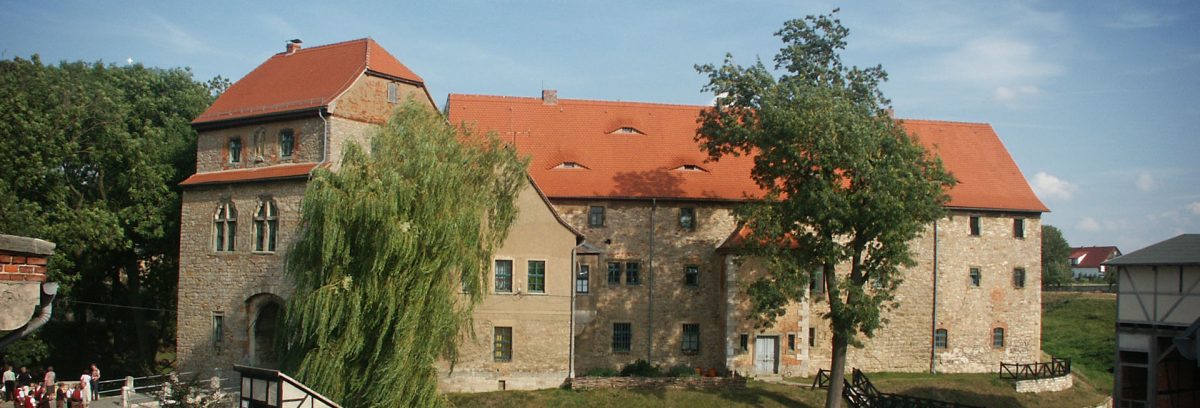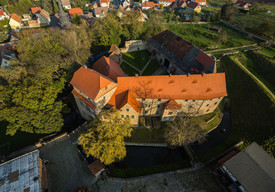The castle in Liebstedt is one of the few remaining castles, where an old trading route passed through the castle. One of the major medieval long distance roads, the Copper Road Kufperstrasse connected Venice and Hamburg.
“Margrave Friedrich von Meissen exchanges the Teutonic Knightly Order village and fort of Liebstedt with its church rights and all that belongs to it for the fortress of the Order Wallhausen.” deed dated 1 October 1331.
Construction with bricks was introduced by order of the German Knights, who constructed many of their castles in Brandenburg and on the Baltic coast with bricks.
A system of wet and dry moats and earth walls was constructed around the castle. The lines of these fortifications can still be seen around the castle.
The settlement “Liuprehtestat” was first mentioned in 876 in the annals of the monastery of Fulda. In August 956 “King Otto leaves for love of his daughter Mathilde the Monastery Quedlinburg from his property in the community of Liebstedt in Thuringia”.
The Quedlinburg Monastery survived here until 1300. This possession was then sold to Pforta Monastery on the River Saale. After four years, in 1304 the Herzfeld Monastery became owner of Liebstedt. Thereafter the county of Orlamünde-Weimar, the counts of Beichlingen and the Margrave of Meissen were by turns lords of Liebstedt.
The Teutonic order was disbanded in 1809 by Napoleon. After the Vienna Congress in 1815 the land passed to the Duchy of Sachsen Weimar Eisenach. With the foundation of Thuringia in 1920 the land was given to the new state. After 1946 the land changed ownership to the university of Leipzig.

A foundation was created in 1990 to restore the castle for use as a museum.


